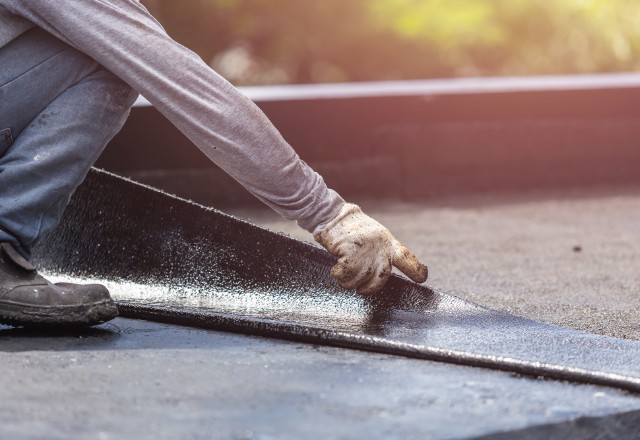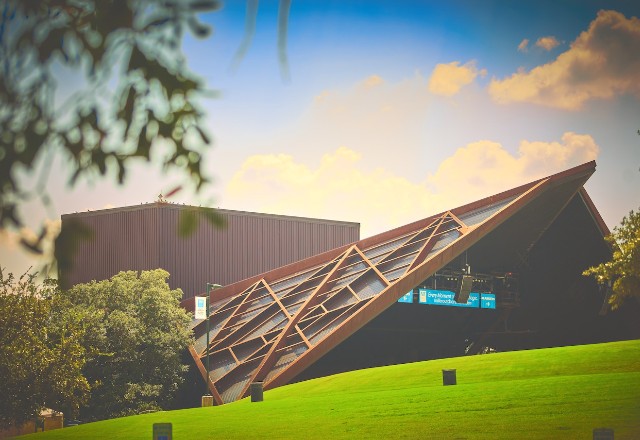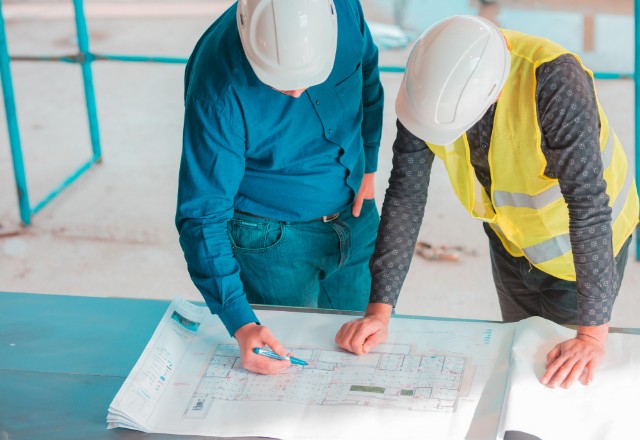When it comes to commercial roofing, flat roofs are a popular choice for many building owners. Understanding the different types of commercial flat roofs is crucial for making an informed decision that best suits your building’s needs. In this comprehensive article, we’ll explore the various types of commercial flat roofs, their advantages, disadvantages, and ideal applications, helping you choose the perfect roofing solution for your commercial property.
Built-Up Roof (BUR)
Built-up roofing, also known as tar and gravel roofs, is one of the most traditional types of commercial flat roofs. This roofing system consists of multiple layers of bitumen (asphalt or coal tar) alternated with reinforcing fabric, creating a robust and durable roof surface. The top layer is typically covered with gravel or a mineral-surfaced cap sheet for added protection against UV rays and weather elements.
Advantages of BUR:
- Proven track record of longevity and reliability
- Excellent waterproofing capabilities
- High resistance to foot traffic and impact damage
- Cost-effective option for large commercial roofs
Disadvantages of BUR:
- Heavy weight may require additional structural support
- Longer installation time compared to other roofing types
- Strong odor during installation due to hot bitumen application
Ideal applications: BUR is an excellent choice for large, low-slope commercial roofs that require a durable and long-lasting roofing solution, such as industrial facilities, warehouses, and schools.
Modified Bitumen Roof
Modified bitumen roofing is an advanced version of the traditional built-up roof. This type of commercial flat roof incorporates a polymer-modified bitumen membrane, which is reinforced with either a polyester or fiberglass mat. The two main types of modified bitumen roofing are:
- Atactic Polypropylene (APP): APP-modified bitumen provides enhanced flexibility and UV resistance.
- Styrene-Butadiene-Styrene (SBS): SBS-modified bitumen offers improved elasticity and cold-temperature performance.
Advantages of modified bitumen roofing:
- Excellent tensile strength and dimensional stability
- High resistance to punctures, tears, and foot traffic
- Flexibility to accommodate building movement and thermal expansion
- Variety of installation methods (torch-applied, cold-applied, or self-adhered)
Disadvantages of modified bitumen roofing:
- Higher material and installation costs compared to BUR
- Requires skilled and experienced contractors for proper installation
- Limited color options and aesthetic versatility
Ideal applications: Modified bitumen roofing is well-suited for commercial buildings with low-slope roofs that experience high foot traffic or are located in areas with extreme temperature fluctuations, such as retail centers, office buildings, and hospitals.

Single-Ply Membrane Roof
Single-ply membrane roofing has gained popularity in recent years due to its ease of installation, lightweight nature, and energy efficiency. These roofs consist of a single layer of synthetic rubber or thermoplastic material that is mechanically fastened, ballasted, or adhered to the roof deck. The three most common types of single-ply membranes are:
- Thermoplastic Polyolefin (TPO): TPO is a heat-weldable, reflective membrane that offers excellent energy efficiency and resistance to UV radiation and chemical exposure.
- Polyvinyl Chloride (PVC): PVC membranes provide superior strength, fire resistance, and chemical stability, making them ideal for restaurants and industrial facilities.
- Ethylene Propylene Diene Monomer (EPDM): EPDM is a synthetic rubber membrane known for its exceptional durability, flexibility, and resistance to ozone and UV radiation.
Advantages of single-ply membrane roofing:
- Lightweight and easy to install, reducing labor costs
- Excellent energy efficiency due to reflective properties
- Resistant to UV radiation, ozone, and chemical exposure
- Flexible and able to accommodate building movement
Disadvantages of single-ply membrane roofing:
- Susceptible to punctures and tears from sharp objects or hail
- Seams can be vulnerable to leaks if not properly sealed
- May require specialized equipment and skilled labor for installation
Ideal applications: Single-ply membrane roofing is an excellent choice for commercial buildings with large, flat or low-slope roofs that prioritize energy efficiency, such as office buildings, warehouses, and retail centers.
Roofing Type | Lifespan | Energy Efficiency | Foot Traffic Resistance | Installation Complexity |
BUR | 20-30 years | Moderate | High | High |
Modified Bitumen | 15-20 years | Moderate | High | Moderate |
TPO | 15-20 years | High | Moderate | Low |
PVC | 15-20 years | High | Moderate | Low |
EPDM | 20-30 years | Low | Moderate | Low |

Spray Polyurethane Foam (SPF) Roof
Spray Polyurethane Foam (SPF) roofing is a unique and versatile roofing system that offers seamless, monolithic protection for commercial flat roofs. SPF is applied as a liquid spray that expands and hardens into a solid foam layer, creating a seamless and fully adhered roofing surface. A protective elastomeric coating is then applied over the foam for added durability and UV resistance.
Advantages of SPF roofing:
- Seamless and self-flashing, eliminating common leak sources
- Excellent insulation properties, reducing energy costs
- Lightweight and can be applied over existing roofing systems
- Versatile and can be used on roofs with complex shapes and penetrations
Disadvantages of SPF roofing:
- Requires specialized equipment and skilled contractors for installation
- Moisture during installation can lead to foam degradation and loss of adhesion
- Higher initial cost compared to other roofing types
Ideal applications: SPF roofing is an excellent choice for commercial buildings with unusual roof shapes, multiple penetrations, or those seeking to improve energy efficiency, such as schools, hospitals, and manufacturing facilities.
Green Roof
Green roofs, also known as living roofs or eco-roofs, are a sustainable and environmentally friendly option for commercial flat roofs. These roofs incorporate a layer of vegetation planted over a waterproofing membrane, growing medium, and drainage system. There are two main types of green roofs:
- Extensive green roofs: Shallow growing medium (2-6 inches) with low-maintenance, drought-resistant plants.
- Intensive green roofs: Deeper growing medium (6 inches or more) with a wider variety of plants, including shrubs and trees, requiring more maintenance.
Advantages of green roofing:
- Improves building energy efficiency by providing insulation and reducing heat island effect
- Enhances stormwater management by retaining and filtering rainwater
- Increases roof lifespan by protecting the underlying waterproofing membrane
- Provides aesthetic appeal and can create usable green space
Disadvantages of green roofing:
- Higher installation and maintenance costs compared to traditional roofing systems
- Requires additional structural support to accommodate the weight of the growing medium and vegetation
- May require specialized maintenance and irrigation systems
Ideal applications: Green roofing is an excellent choice for commercial buildings seeking to improve sustainability, energy efficiency, and stormwater management, such as office buildings, government facilities, and educational institutions.

Choosing the Right Commercial Flat Roof
Selecting the appropriate type of commercial flat roof for your building involves considering several key factors:
- Climate and weather conditions: Choose a roofing system that can withstand your local climate, including temperature extremes, UV exposure, and precipitation.
- Building use and occupancy: Consider the activities and processes that take place within your building, as well as any specific requirements, such as fire resistance or chemical exposure.
- Energy efficiency goals: Opt for a roofing system with reflective properties or insulating capabilities to reduce energy consumption and costs.
- Budget and life-cycle costs: Evaluate both the initial installation cost and the long-term maintenance and replacement expenses associated with each roofing type.
- Structural capacity: Ensure that your building’s structure can support the weight of the chosen roofing system, particularly for heavier options like green roofs or ballasted single-ply membranes.
- Aesthetics and sustainability: Consider the visual impact of the roofing system on your building’s overall appearance and any sustainable design goals you may have.
Consulting with a professional commercial roofing contractor is essential for making an informed decision. They can assess your building’s specific needs, provide recommendations, and ensure proper installation and maintenance of your chosen roofing system.
Maintenance and Repair of Commercial Flat Roofs
Regular maintenance and timely repairs are crucial for extending the lifespan of your commercial flat roof and preventing costly issues. Some key maintenance tasks include:
- Conducting regular inspections to identify potential problems, such as cracks, blisters, or ponding water
- Keeping the roof surface clean and free of debris, which can trap moisture and promote deterioration
- Ensuring proper drainage by clearing gutters, downspouts, and scuppers
- Repairing any damage or leaks promptly to prevent further deterioration and water infiltration
- Recoating or resealing the roof surface as needed to maintain its waterproofing properties
By following a proactive maintenance schedule and addressing repairs in a timely manner, you can maximize the performance and longevity of your commercial flat roof, ultimately saving money on premature replacements.
Conclusion
Choosing the right type of commercial flat roof is a critical decision that impacts your building’s performance, energy efficiency, and long-term costs. By understanding the various types of commercial flat roofs, their advantages, disadvantages, and ideal applications, you can make an informed choice that best meets your building’s specific needs.
Whether you opt for a traditional built-up roof, a modern single-ply membrane, or a sustainable green roof, working with a professional commercial roofing contractor is essential for ensuring a successful installation and ongoing maintenance. By investing in the right roofing system and prioritizing regular upkeep, you can protect your commercial building and its contents for years to come.



 509-201-4190
509-201-4190
